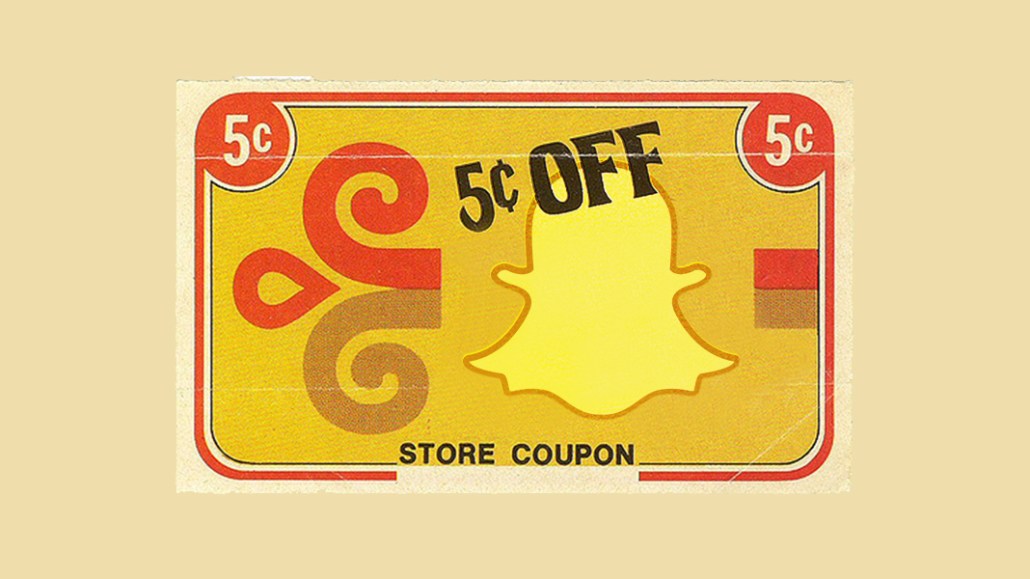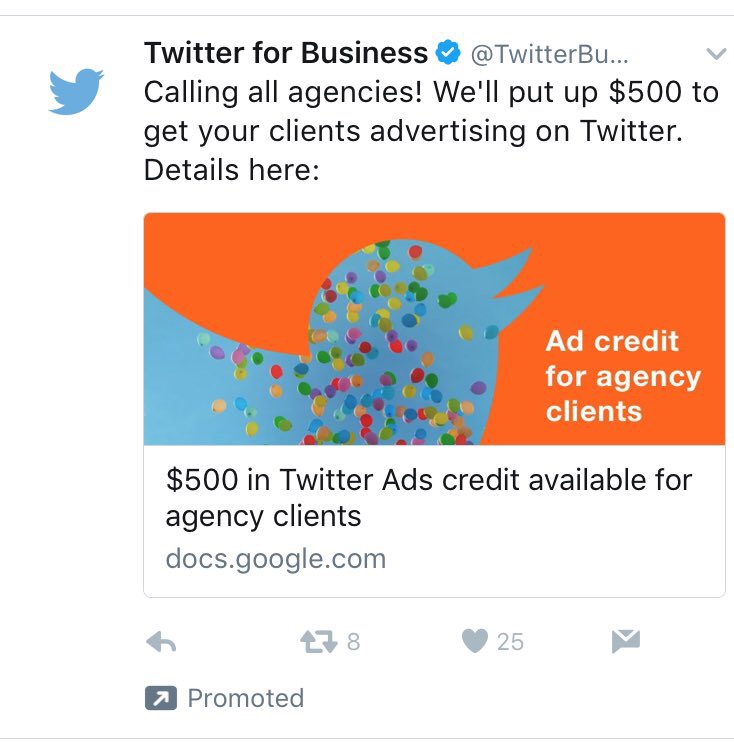Snapchat is wooing ad buyers with discount coupons and bonuses

Snap needs to show good results in the second quarter, and it’s looking to goose its ad business with offers of discounts and incentives to ad buyers.
The platform is incentivizing brands and media buyers, offering bonuses, discount coupons and media credits for ad buys carried out in the second quarter of 2017, said multiple agency executives whom Digiday interviewed. The nature of the incentives, and their value, vary from one media agency to another. Agency execs reported the offers started last week and multiple buyers said the offers extend to mid-June, which happens to be when Snap’s second quarter starts to wrap up.
One media buyer, who wished to remain anonymous, said Snapchat was offering new application programming interface partners a 10 percent bonus media coupon; another said it was providing discounts on ads bought on its self-serve platform. A third agency executive said Snapchat was offering its holding company a 10 percent “reservation” discount, giving a 10 percent credit for any API buy completed through Snapchat. Snapchat declined to comment for this story.
“I can confirm that there are some bonuses and added-value incentives,” said a media buyer at a holding company media agency who wished to remain anonymous. “The value of the discount varies from client to client, but the bottom line is that they’ve been very aggressive in offering incentives to get brands moving on their products.”
The move comes at a time when marketers are seeking a third scalable option outside of Google and Facebook, and pushing back against transparency issues with those platforms. More importantly, Snapchat has ground to make up after a dismal performance in its first quarterly earnings, which came out earlier this month.
“They’re doing it to accelerate their 2017 ad revenue, especially given their Q1 earnings miss,” said Tom Buontempo, president at Attention. “It’ll encourage new partners to run campaigns, which could lead to additional investment, especially if they’re successful.”
Platforms offering buyers such incentives is not unprecedented. Google, Facebook and even Twitter have all offered similar deals in the past. Google had its own incentive program to motivate U.S. advertisers to buy more long before rebates got a bad rap and Facebook often encourages buyers and advertisers to try out new products for a discount, agency executives said. Even Twitter targets agency clients from its Twitter for Business account to get them to advertise on the platform.

But in Snapchat’s case, it’s a move clearly driven aimed at getting more advertisers on board the platform during the second quarter, so the company would be able to show “better revenue and scale” of advertisers in its next earnings report, said Brian Cristiano, CEO at Bold Worldwide. There are still doubts among ad buyers about Snapchat’s ad options, not to mention its slowing user growth that’s led some to say it’s the “next Twitter.” That is not meant as a compliment.
“We need to see some more proof in the pudding, and they need to start showing some legitimate business growth,” he said. “This is a good way to try to do that, as I expect large advertisers will take advantage because it would allow them to get 10 percent more theoretical reach for the same marketing spend, and it might finally incentivize small businesses to also dip their toes.”
This isn’t the first time Snapchat has offered such incentives, according to another media buyer who wished to remain anonymous. But unlike before, where the idea was to give agencies and brands the incentive to scale across their API partners, the focus now is on its self-serve platform that was announced earlier this month, confirming a Digiday report from April.
“Many of us are still not convinced that their self-serve platform is as robust or provides the kind of tracking that Facebook does, and are waiting and watching,” the buyer said. “By offering incentives, they will get more people to try it out, and that will drive more adoption.”
Ben Kunz, svp of marketing and content at Mediassociates, agreed, saying there was considerable confusion among buyers on whether Snapchat buys were good investments or not. By offering these discounts, Snapchat may be trying to convince media buyers that it is, in fact, a good investment.
“One challenge new platforms like Snapchat have is that there is no reference point to determine easily if their ad formats are good or bad deal,” he said. “By positioning pricing with a 10 percent bonus coupon, Snapchat is trying to convince media buyers they are getting ‘good value.’”
It’s also strategically better, said Attention’s Buontempo. Self-serve platforms tend to be the most profitable and scalable advertising offerings for platforms because they let them field investments from more advertisers and to tap into that highly coveted small- to medium-size business market.
“It also requires less of a high-touch process,” he said, “which enables ad revenue to grow without significantly scaling up internal creative and relationship management teams.”
More in Marketing

Pandora is betting on AI agents to scale service and emotional selling during the peak holiday season
Pandora is using AI agents to scale customer service and replicate emotional in-store selling online, just as peak season puts pressure on margins and teams.

Rembrand’s CEO wants to grow virtual ad placements in streaming, and he’s looking elsewhere for models
Omar Tawakol wants to improve advertising within the streaming world, and is working with advertisers and publishers to improve that experience.

Marketers are keen to use generative AI in ad campaigns, but hidden costs lurk
Marketers across the industry want to use AI to cut down on time spent in creative production. It’s not so simple in practice.








